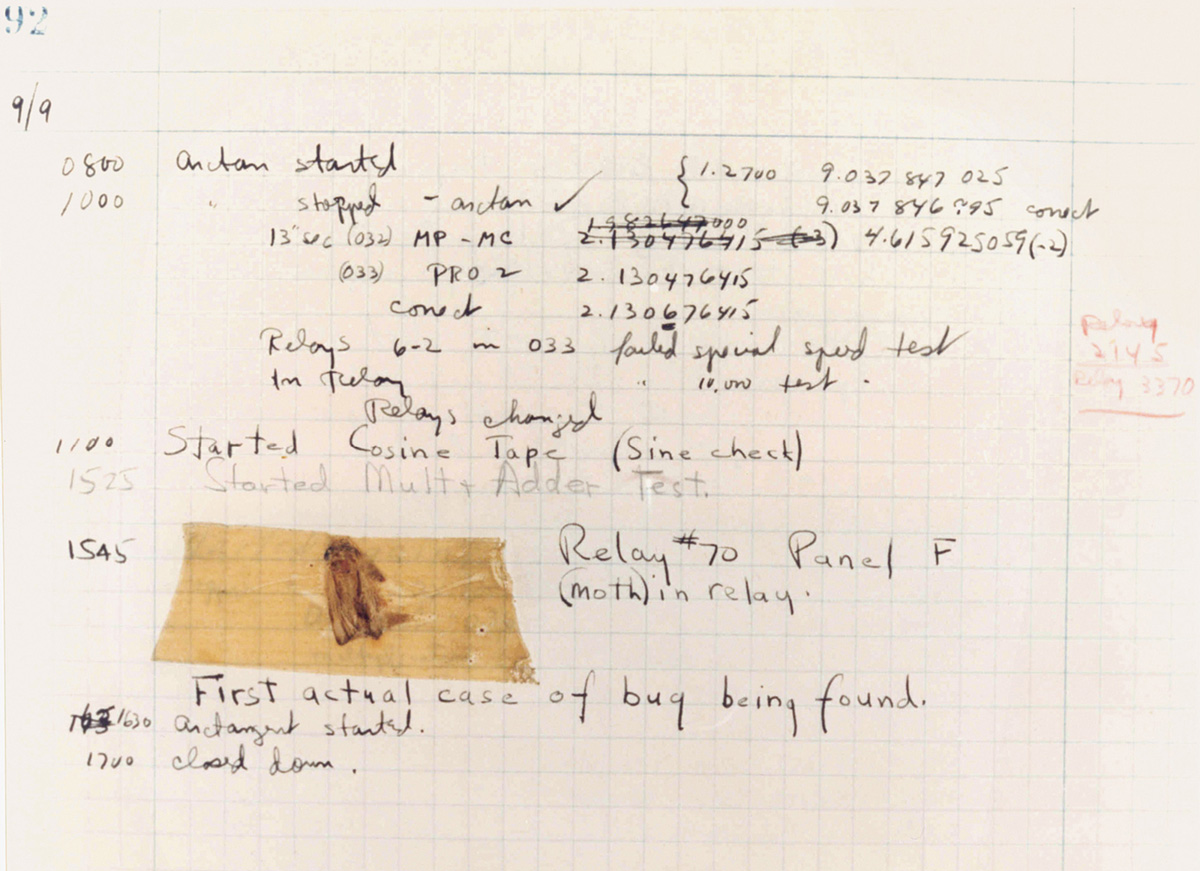Entomological Etymology
On the computer bug
Colin Sonner

After bringing thousands of years of pestilence, fear, and neurosis to humanity, a wholly new species of entomological ruin has plagued our lives for the past sixty years. “Computer bugs” have putatively existed since Grace Murray Hopper and her associates at Harvard pried open a malfunctioning Mark II supercomputer in September 1947. To the surprise of all present, inside the giant machine was a squashed moth, which was immediately taped by Hopper into the computer logbook along with her caption: “First actual case of bug being found.” The very oddness of the event, as well as Hopper’s celebrity (she performed some of the early work on the computer programming language COBOL and achieved the position of Navy Rear Admiral), provided the apparently new coinage with a quirky enough etymology to thrust it into common belief.
The term’s pop etymology has, however, met with some appropriate opposition. It seems that the term bug, and for that matter debug, had been used to describe mechanical hiccups since the late nineteenth century. Originally tinkerer’s slang, the term can be found in the correspondence of Thomas Edison regarding technical difficulties and later more officially in the 1889 OED Supplement. However, the false Hopper etymology still enjoys widespread usage, and her moth now rests at the Smithsonian’s National Museum of American History.
Fred R. Shapiro, “Etymology of the Computer Bug: History and Folklore,” American Speech, vol. 62, no. 4 (Winter 1987), pp. 376–378.
Colin Sonner resides in Brooklyn, New York, but is presently lost in middle America.